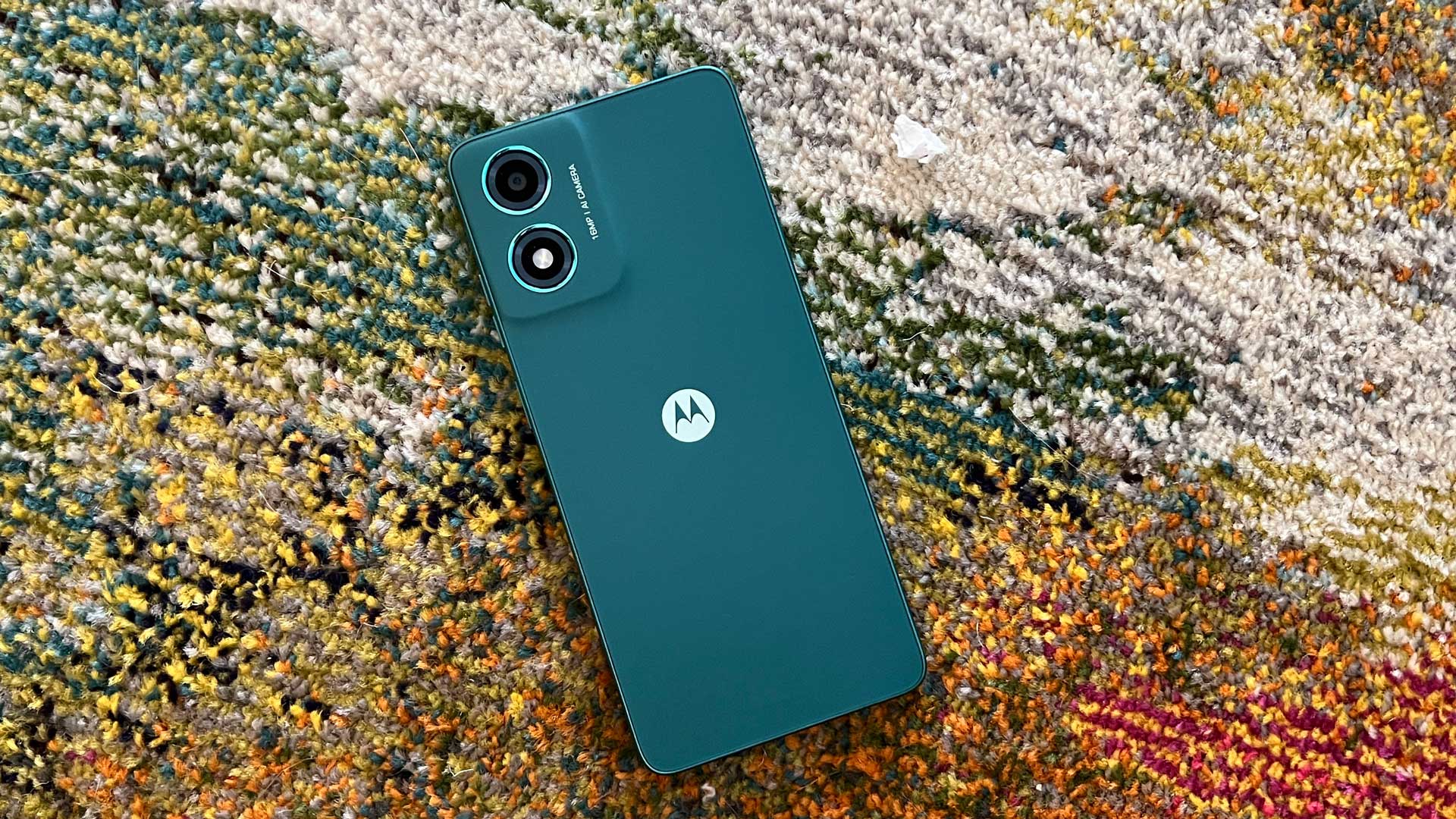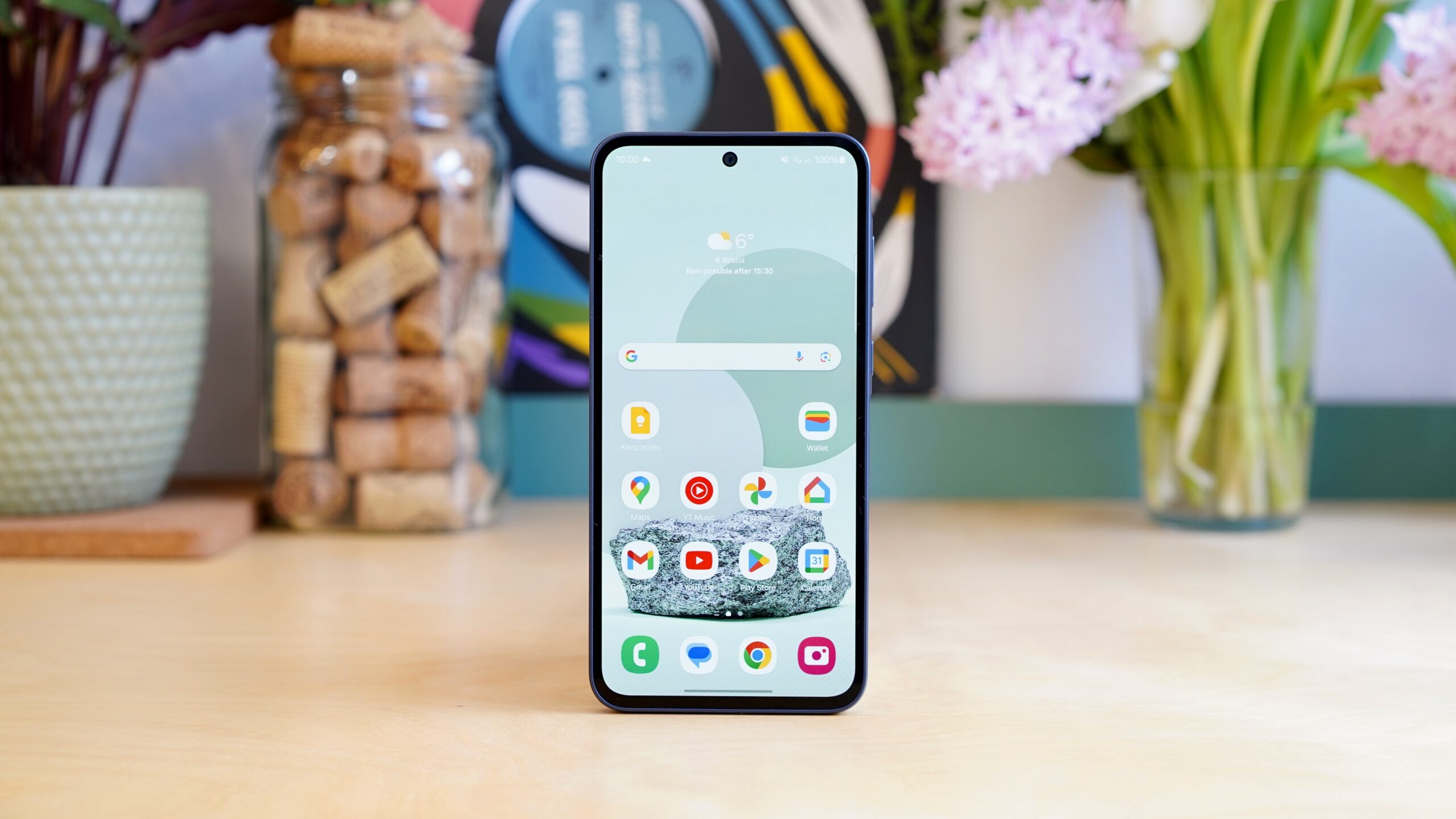Motorola Razr 40 Review
Sometimes it's better to spend a bit more
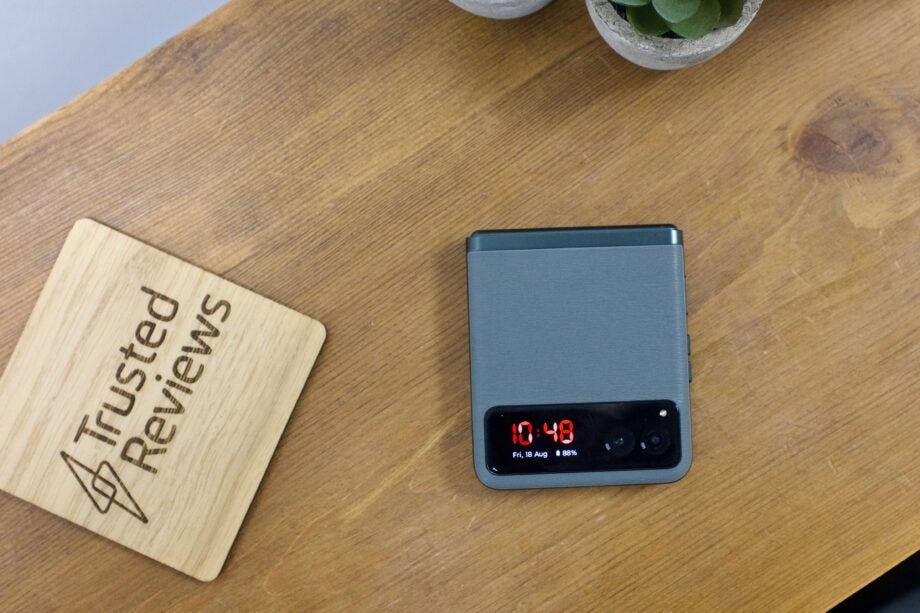
Verdict
A mid-range foldable phone is a great idea but the Motorola Razr 40 makes a few too many sacrifices to make it a viable alternative to some of the pricier, far better competitors. The battery life is great though.
Pros
- Almost affordable for a foldable phone
- Long battery life
- Motorola’s software has some neat tricks
Cons
- Mostly useless outer display
- Creaky build feels cheap
- Performance is nothing special for the price
Key Features
- Small external displayUnlike its premium sibling, the Razr 40 has a 1.9-inch external panel designed to showcase key information at a glance, removing the need to constantly unfold the device.
- Snapdragon 7 Gen 1 chipsetThough not the latest, the Snapdragon 7 Gen 1 chipset should deliver fine everyday performance.
- Flagship-level displayWith a 6.9-inch pOLED panel boasting a super-smooth 144Hz refresh rate and HDR10+ support, the Razr 40 is ideal for binging shows on Netflix and scrolling through TikTok.
Introduction
The Motorola Razr 40 (simply called the Razr 2023 in some regions) is the beginning of a new category of foldables – mid-range ones.
At £799 (though I have already seen it drop down to £699 for extended periods), the Moto Razr 40 is as budget as foldable phones get, coming in noticeably cheaper than the Oppo Find N2 Flip and Samsung Galaxy Z Flip 5.
The big question is: what has been sacrificed to meet that lower price, and is it worth it?
Design
- The body is a little creaky and there’s a lot of plastic here
- Faux leather finish is nice and grippy
- Clamshell design is a clever way to make the phone feel small
This phone might be called the Razr, but there isn’t much DNA of the iconic clamshell to be found. It’s Razr by name, rather than nature.
A few of the sacrifices required to meet a lower price make themselves immediately known. This is the creakiest foldable I have ever used, making some rather uncomfortable sounds when it’s opened, closed or slightly twisted. Having come from the fantastically well-put-together Galaxy Z Flip 5, these noises didn’t fill me with a lot of hope for how well this phone will age.
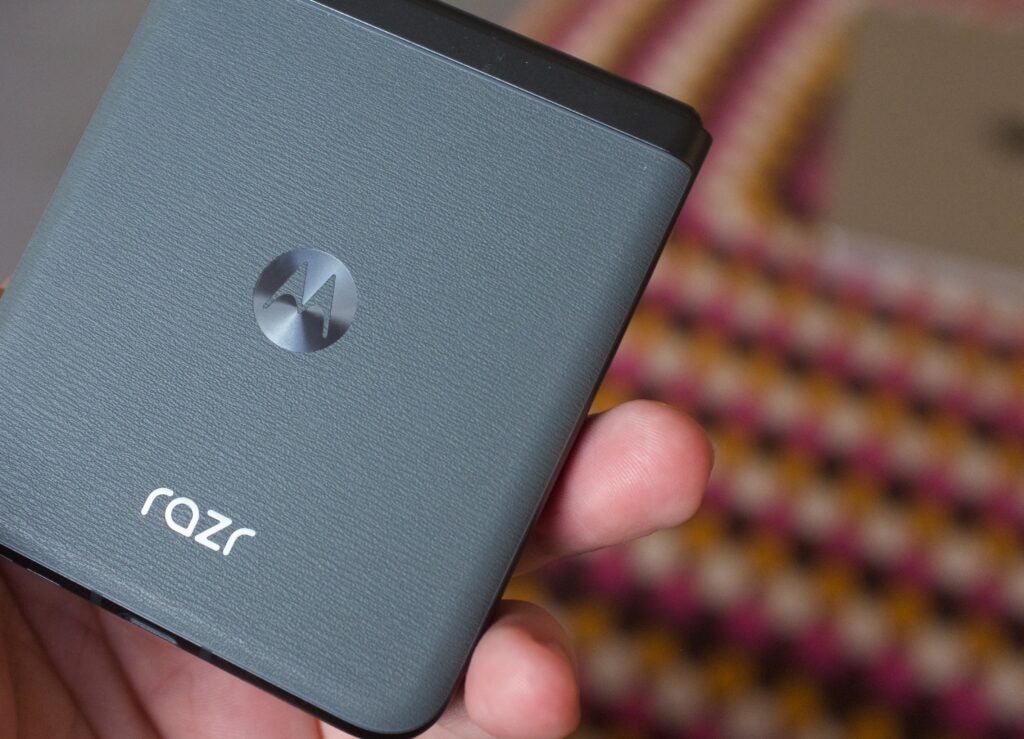
There’s also more plastic here than on other foldable phones. The front and back of my lovely forest green review unit is covered in a faux-leather material that’s nice and grippy but not quite as high-end as the metal on the Razr 40 Ultra. Motorola calls the covering vegan leather – but really it’s just moulded plastic.
I really like phones that use this material. It’s much warmer than metal, far grippier too and doesn’t demand a case attached immediately quite as much.
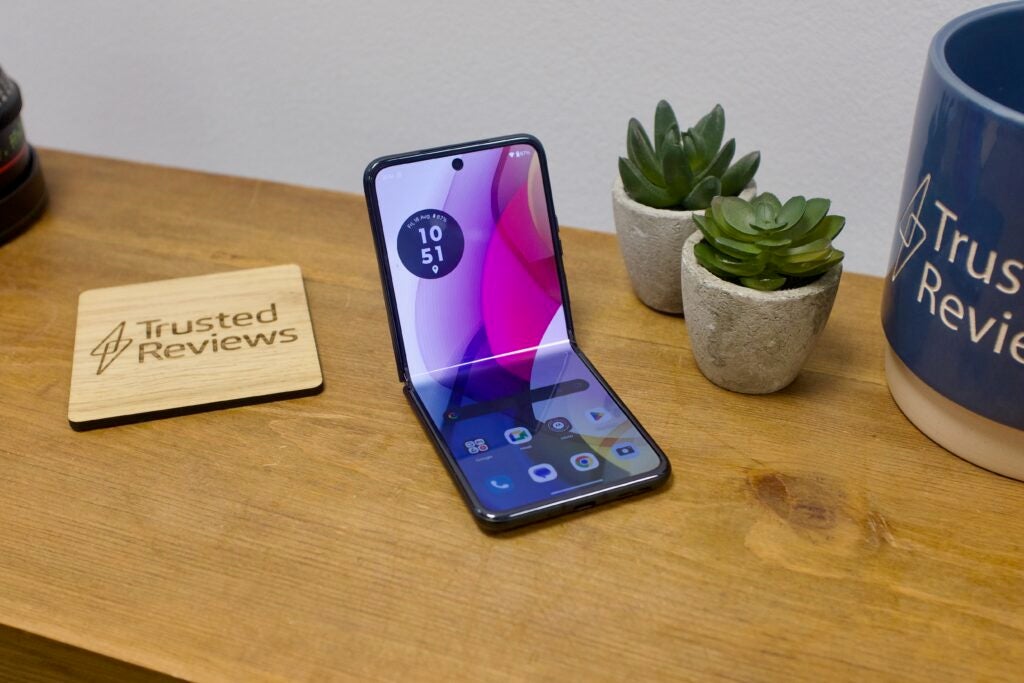
The Razr 40 hasn’t completely sacrificed metal, though. It has a tough aluminium frame and the hinge, which allows the phone to fold flat, is reassuringly made from metal too. It’s slightly disappointing to see nothing but a water-repellant coating here, rather than a true IP rating for protection from the elements. Considering the pricier Razr 40 Ultra eschews this too it’s hardly a surprise, but it should be something that’s more common on foldable phones than it is.
Alongside green, there’s a tasteful lilac finish and a light cream rounding off the trio. The lack of a more subtle black option is odd though, as is an option without the leather finish.
The phone ships in packaging that’s completely free of plastic which is great to see. The sleeve covering the phone is paper, as are the coverings for the included charger and cable. More of this from other brands, please.
Screen
- Internal 6.9-inch OLED display
- A very small 1.5-inch outer screen
- Visible crease on the inside
The biggest disappointment with the Moto Razr 40 is the outer display. While competing, and admittedly pricier, phones like the Oppo Find N2 Flip and Samsung’s Galaxy Z Flip 5 let you complete full tasks and interact with apps on large outer displays, the 1.5-inch panel here is really only useful for checking the time or recent notifications.
This smaller outer display is clearly where Motorola is looking differentiate its to 2023 foldable options, with the Razr 40 Ultra packing a larger panel that lets you interact with any app installed on the phone. It’s handy being able to knock out a full WhatsApp message without opening the phone and it’s these unique features that’ll actually make the vast majority of consumers consider a clamshell foldable.
A double tap on the screen brings up the time, date and battery status of the phone, while a swipe down gives quick access to Bluetooth, brightness and a few other settings. A swipe up shows you recent notifications, but I found the screen generally too small to comfortably read anything.
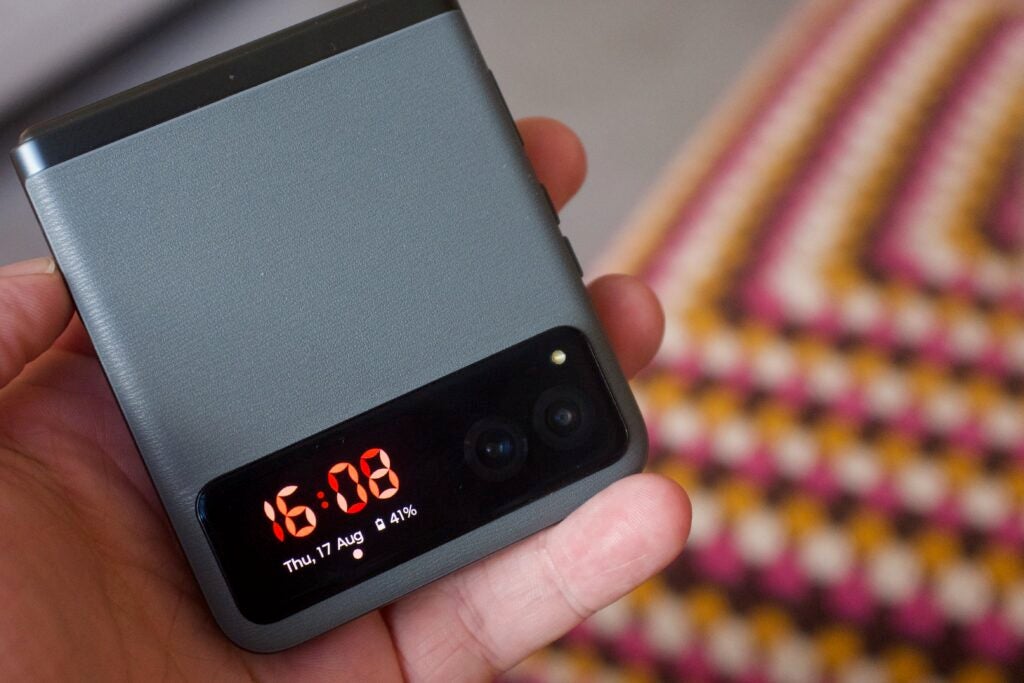
There’s a decent amount of customisation options too, though it’s all very much decided by what Motorola has added. You could, for instance, add quick access to a timer or tweak the design of the clock. There’s no access inside of apps though.
Unfurl the Razr 40 and there’s a good screen inside – albeit one that’s so tall it’s a bit of stretch to comfortably use the phone without gripping with two hands to reach the corners. The tall aspect ratio isn’t ideal for videos either, with hefty black bars on either side of the content. It’s better for social media apps though, as you can get extra content on your Tik Tok or Instagram feeds.
The OLED display measures 6.9-inches, packs a 2640 x 1080 resolution and uses LTPO tech, so it can ramp the refresh rate up and down again to save battery.
The screen has a max refresh of 144Hz, however unless you’re playing a very specific game that utilises that higher refresh it’ll tend to switch between 60Hz and 120Hz – though it can drop as low as 1Hz. If you want to limit things further, there is an option to set 60Hz as the maximum it’ll jump to.
The big issue I have with every foldable phone I have ever reviewed is that the screen lacks the reassuring strength of glass. The plastic OLED here, for instance, reflects a lot more than a typical glass screen and is a lot harder to see in brighter conditions. There’s also a noticeable crease running across the middle, which only not reflects horrendously but can be felt with every swipe.
Cameras
- 64MP main camera with PDAF autofocus
- 13MP secondary camera
There are two cameras on the lid of the Motorola Razr, alongside another one on the inside that I can’t image will be used all that often. It’s a camera setup that gets the job done, capturing nice, bright and detailed snaps in daylight conditions – just don’t expect seriously good low-light performance.
On the lid you’ve got two cameras: a 13-megapixel sensor that takes ultrawide and macro shots and a 64MP main sensor. On paper, the camera actually has more megapixels than the Ultra’s 12MP sensor, however megapixels don’t really mean much on smartphone cameras. The wider f/1.5 aperture on the Ultra model and generally better sensor still give it comfortably the upper hand.
Shots from the 64MP (this bins down to 16MP) pop with good colours and plenty of detail that veers into looking oversharpened at times. The photos don’t look overly natural when you’re shooting colourful things like flowers or grass, but they’re pleasing nevertheless and fine for sharing on Instagram.


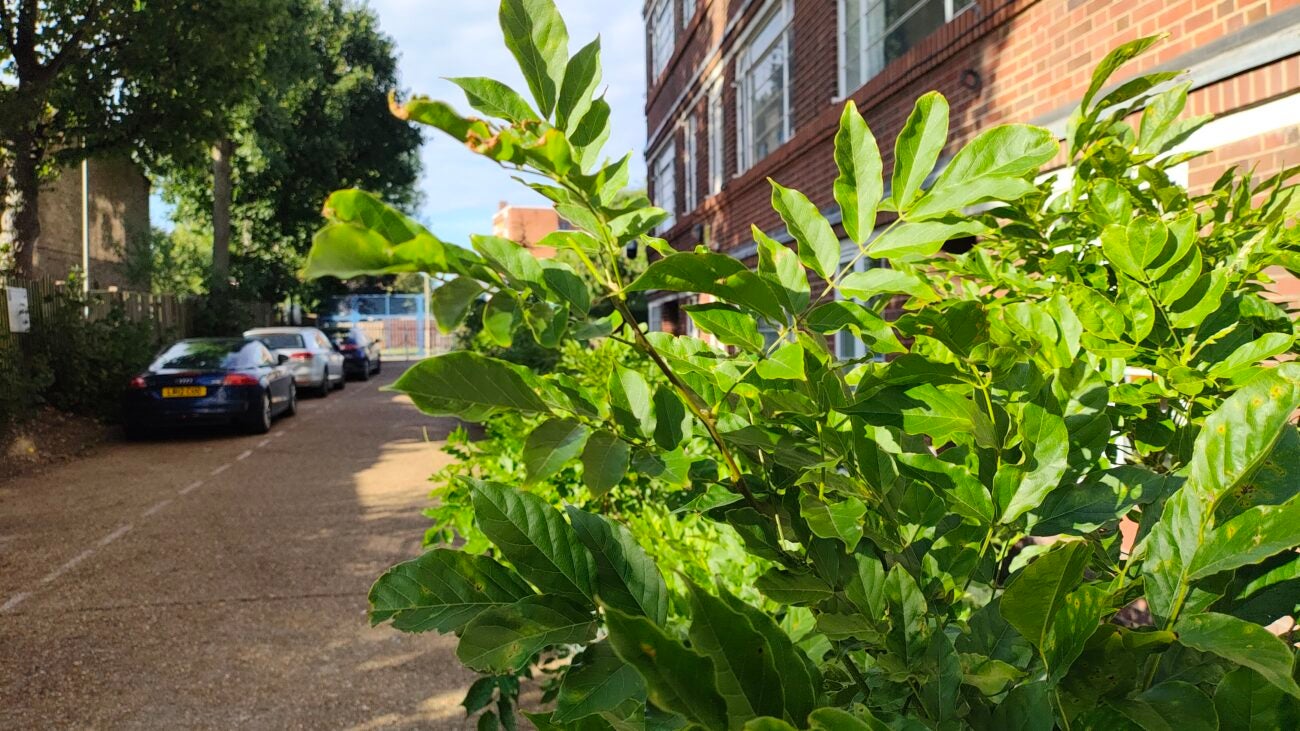


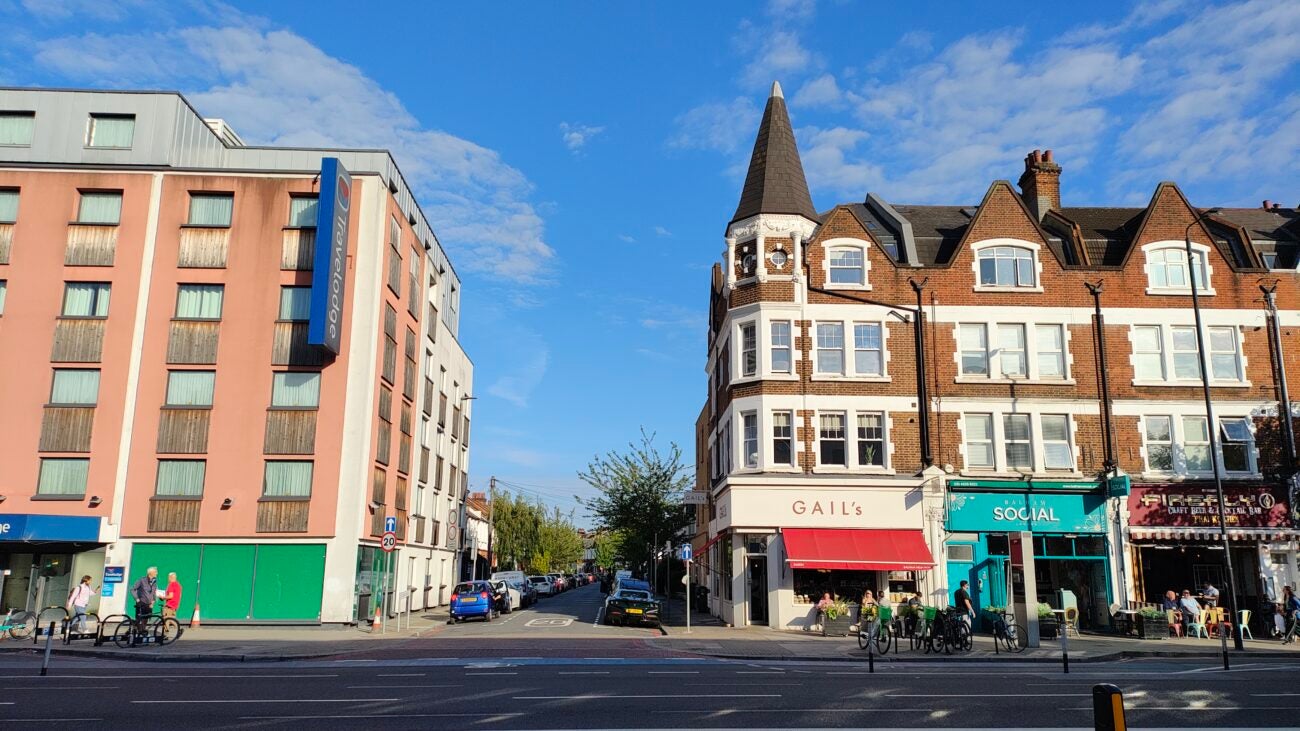
Even with OIS (optical image stabilisation) onboard, the Razr 40 falls down in low-light situations. When compared to the far cheaper Pixel 7a, night shots lack details, take far too long to focus and pump up bright spots too much.
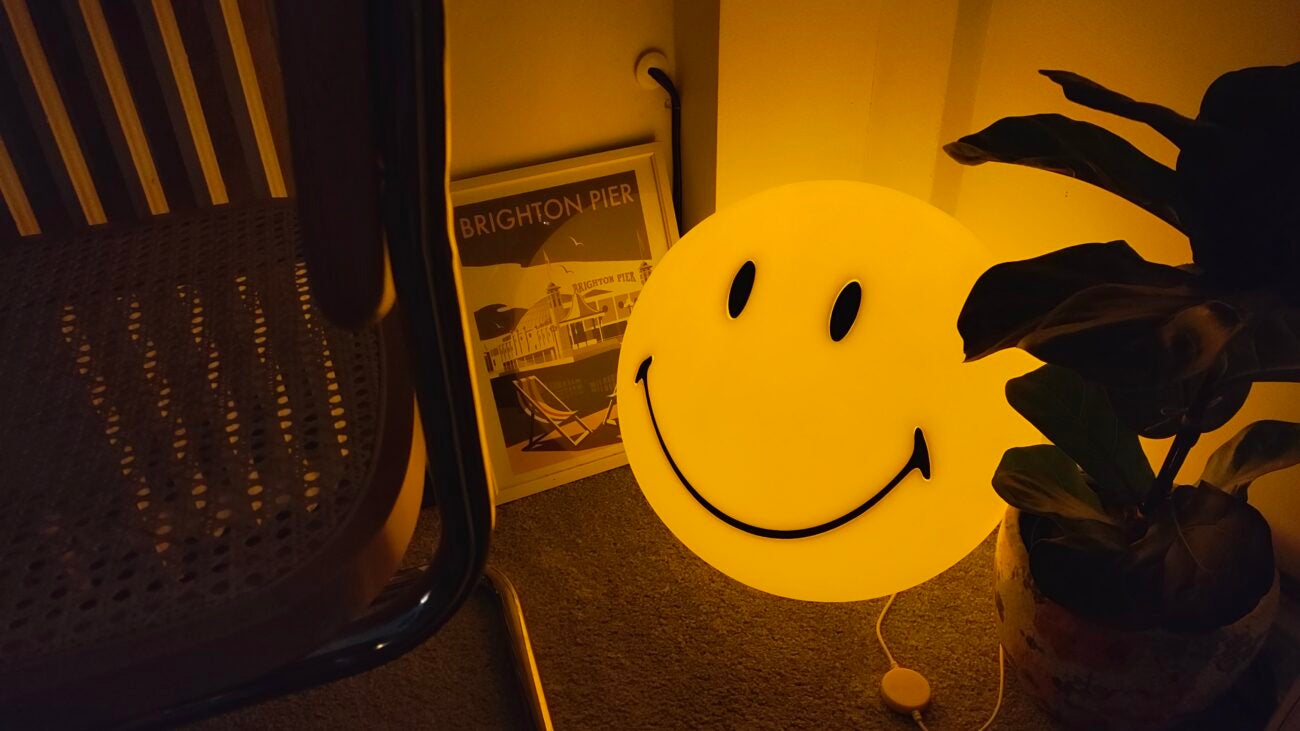

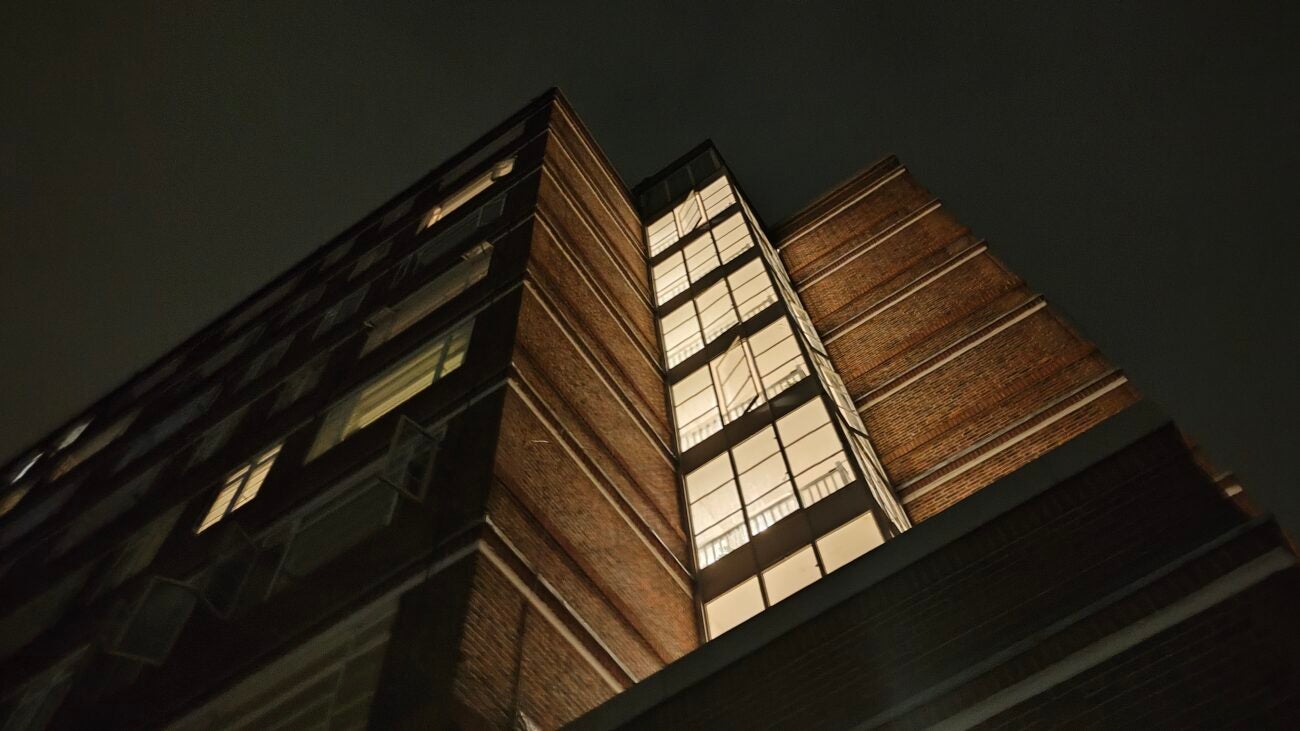
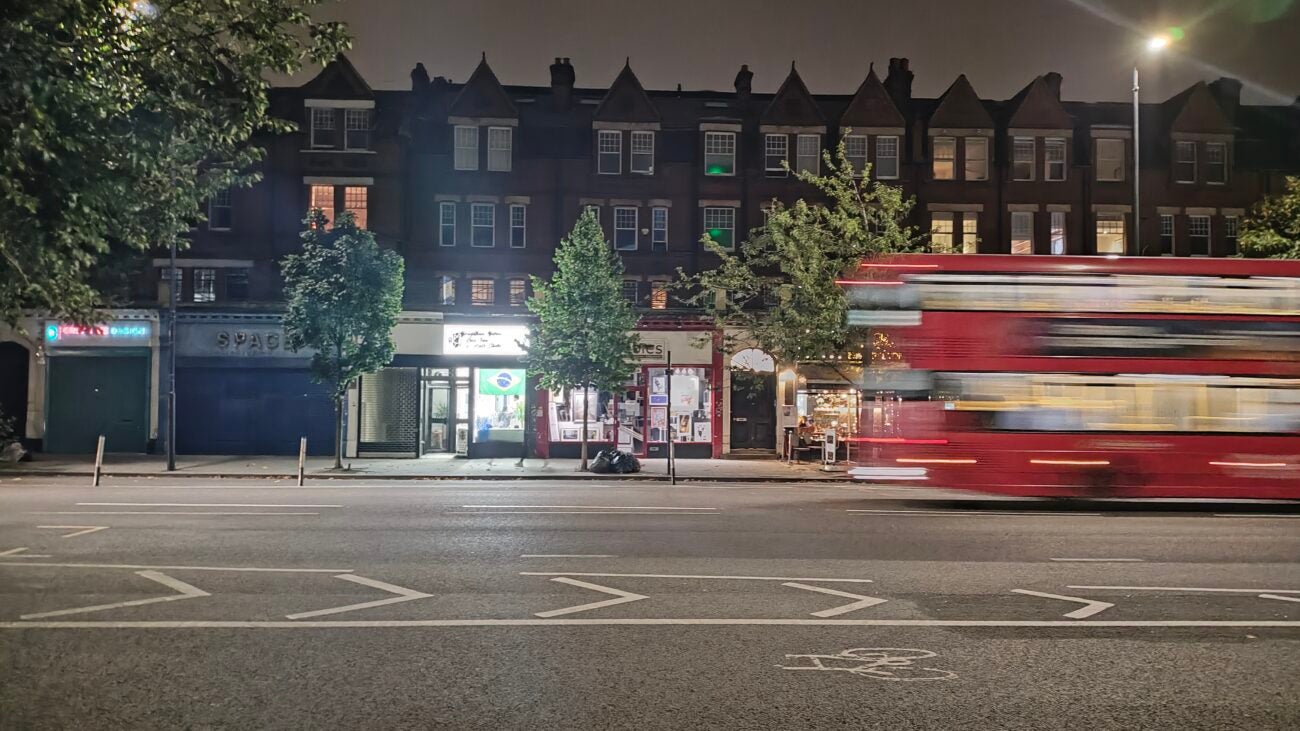
Things are arguably worse on the secondary camera. Ultrawide shots aren’t anywhere near as colourful, often looking drab in comparison. It’s never great when the image varies so much moving between sensors.
On the inside there’s a 32MP selfie camera, however as you use the outer display and main cameras for taking selfies, I don’t really think many will use this internal camera for anything aside from video calls.
Video recording maxes out at 4K, although only at 30fps, There’s a 120fps slow-mo mode too, but this drops the resolution down to 1080p.
Performance
- Mid-range Snapdragon 7 Gen 1 is an ok performer for most daily tasks
- 8/12GGB RAM and up to 256GB UFS 2.2 storage
- No expandable storage
Judging the Razr 40’s performance is a little tricky. Compared to other similar–priced slab phones, something like the OnePlus 11 or even the Pixel 7 Pro, it’s a disappointment. But then, the Snapdragon 7 Gen 1 chip is more commonly found in phones under £450/$450 – the Xiaomi 13 Lite, for instance – and for that price, its shortcomings are easier to forgive.
This isn’t a phone aiming to be a performance champion, with its priorities most certainly elsewhere and that just had to be accepted.
For the majority of everyday tasks, the mid-range Qualcomm chip performs well. It has similar CPU power to the Nothing Phone (1) – an affordable phone released in mid-2022 – but there’s some extra grunt in the graphics department which puts it closer to phones running old Snapdragon 8-series chips.
All the games I tried ran well and the 144Hz display adds some extra fizz to scrolling. It did have numerous times where the phone would rapidly slow down though, grinding to a halt and then all of a sudden working hard to catch up. It does stay very cool though – it didn’t get hot to the touch even when running benchmarking apps. Speaking of benchmarking results, you can see how it compares to some popular competition below.
Call quality is good and I love being able to snap the shut to end a call, just like I am on an early 2000s series of 24. There’s plenty of retro charm muttered throughout these clamshell devices.
Storage is either 128GB or 256GB and RAM is either 8 or 12GB, though these will vary by region. There’s no expandable storage, so choose wisely.
Software
- Motorola does a good job with the Android 13 tweaks
- Plenty of gestures and neat tricks
- Three promised OS updates
I’ve been a fan of Motorola’s tweaks to Google’s Android OS for a while now and that continues with the Razr 40. The version of Android 13 is similar to what’s considered stock Android, just with a smattering of Motorola additions plus a nice font and a general lack of annoying bloatware.
Motorola has combined all the tweaks into a handy app, making them easily accessible. This app lets you enable or disable the variety of Moto gestures – a quick twist of the phone to open the camera, for instance – or personalise things like the home screen layout and font. You can also edit the cover outer display here too.
There are also some of standard foldable software tweaks we’ve come to expect. Fold and angle to screen when you’re watching a YouTube video and the video will take up more space on the top portion of the display, pushing the comments down onto the bottom part. It’s a similar story in the camera app, allowing you to prop the phone up a makeshift tripod. The only problem is that the hinge isn’t very sturdy and doesn’t stay in place very well.
Motorola is promising three years of software updates which isn’t the best, but still adequate.
Battery Life
- Big, for a foldable, 4200mAh battery
- 33w fast charging and included charger
While there’s plenty Motorola can improve upon with the next iteration of its ‘mid-range’ Razr, battery life shouldn’t be high up that list. Thanks to the 4200mAh cell, LTPO screen and power-supping chipset this is a foldable that can last a day of heavy use, or even two days with lighter use.
The Razr 40 comfortably lasts longer than the Galaxy Z Flip 5 and Razr 40 Ultra in our tests, both of which tended to sit below 20% by the end of a busy day, Instead, I was finishing days with 35-40%.
I do tend to use foldables a little differently than more traditional phones, unlocking them less and using the outer display to see the time and any recent notifications. This will have a benefit on endurance and is one of the reasons why I could see lighter users getting around two full days of use (about six hours of screen-on time).
In benchmark tests, the Razr 40 drained 7% of its battery streaming an hour of Netflix content – 2% less than the Razr 40 Ultra. An hour of light took off 5%, again slightly better than its pricier sibling.
Motorola still includes chargers with many of its phones and the 33w capable charger inside the plastic-free packaging is nice to see. Oddly though, the phone itself maxes out at 30w – which is fast enough. A 15 minute charge got me up 30%, by 30 minutes I was at 59% and it hit 100% in 64 minutes. Annoyingly, the charger is USB-A to USB-C than USB-C to USB-C so it can’t be used to charge up smaller laptops or the like.
There’s wireless charging too, though at 5w it’s so slow I could only recommend using it for overnight charging.
Latest deals
Should you buy it?
You should buy the Razr 40 if you must have a clamshell foldable: There’s no denying this is one of the cheapest ways to get yourself a foldable phone and if that’s the key deciding factor, this could be for you.
You shouldn’t buy the Razr 40 if you want a practical outer display: The small, narrow lid display here is mostly useless, aside from for checking the time.
Final Thoughts
It’s great to see Motorola pushing down the price of foldable phones and in a couple of years, once the kinks have been ironed out, I am sure these cute, dinky clamshell devices will have grown enormously in popularity.
For now though, the Razr 40 makes a few too many sacrifices to make it a standout buy at its £799.99 RRP – especially when the Oppo Find N2 Flip isn’t too much more and the Galaxy Z Flip 4 can often be found for less than £600.
While the overall design is nice and the battery life standout in this category, the creaky body is disconcerting for a phone that costs this much. Add to that a fairly useless outer screen, mid-range performance and average cameras and you have to really want a foldable to plump for this over some of the best mid-range phones around.
In the USA, the Razr 40 is known as the Razr 2023, however a price and full release date haven’t been confirmed yet.
How we test
We test every mobile phone we review thoroughly. We use industry-standard tests to compare features properly and we use the phone as our main device over the review period. We’ll always tell you what we find and we never, ever, accept money to review a product.
Find out more about how we test in our ethics policy.
Used as a main phone for a week
Thorough camera testing in well-lit and low-light conditions
Tested and benchmarked using respected industry tests
FAQs
Yes, Motorola includes a fast charger in the box of the Razr 40.
The Razr 40 is named the Razr 2023 in the States, however there’s no price or release date yet.

